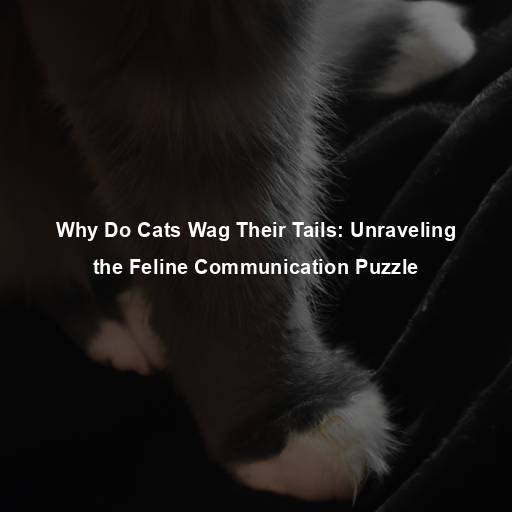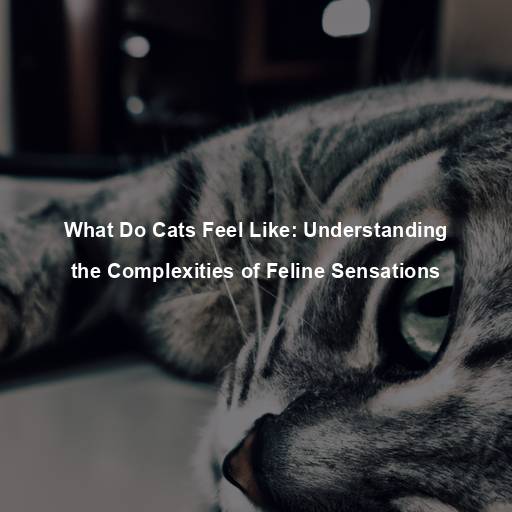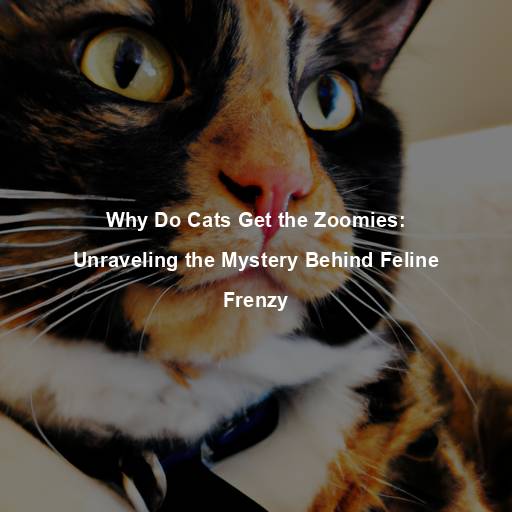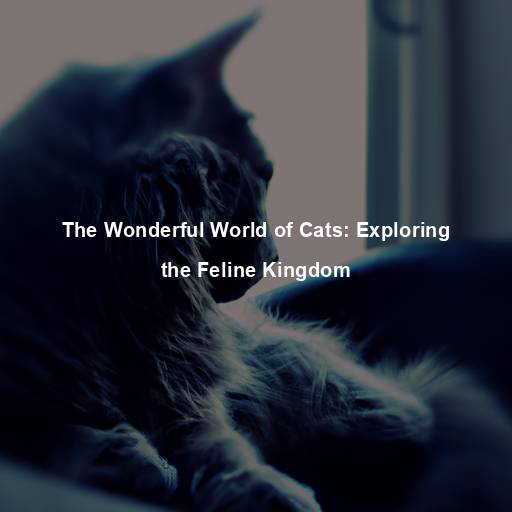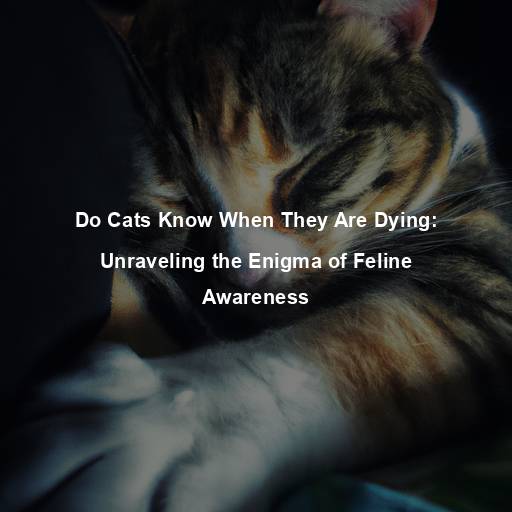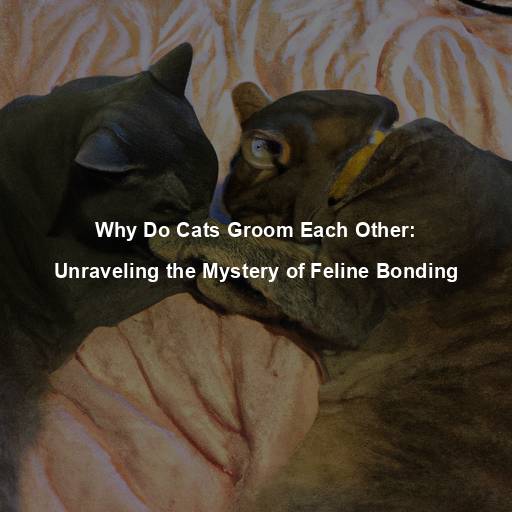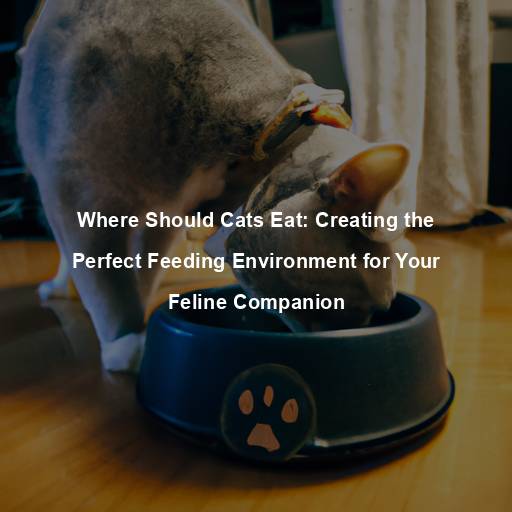Why Do Cats Wag Their Tails: Unraveling the Feline Communication Puzzle
Last Updated on November 3, 2023 by Evan
Contents
- 1 Understanding Feline Behavior: The Intricate Language of Tails
- 1.1 Tail Wagging: A Multifaceted Gesture
- 1.2 Expressing Different Emotions
- 1.3 Communication and Social Significance
- 1.4 Tail Wagging: Not Always What It Seems
- 1.5 Tail Talk: Decoding the Feline Language
- 1.6 Strengthening the Human-Feline Bond
- 1.7 Manx Cats: The Rumpy and the Stumpy
- 1.8 Bobtail Cats: A Short But Sweet Tail
- 2 The Importance of Tail Observation
- 3 Tail Care and Safety Precautions
- 4 FAQs on Why Do Cats Wag Their Tails
- 4.1 What does it mean when a cat wags its tail?
- 4.2 Why do cats wag their tails when they are annoyed?
- 4.3 Do cats wag their tails when they are happy?
- 4.4 Can tail wagging in cats indicate fear or anxiety?
- 4.5 Are all tail wagging movements in cats the same?
- 4.6 Should I try to pet a cat while it is wagging its tail?
Understanding Feline Behavior: The Intricate Language of Tails
Cats, those enigmatic beings that grace our lives with their presence, never cease to enthrall us. Their purrs, a symphony of inscrutability, and their graceful movements, a mesmerizing dance, leave us spellbound. Among their many behaviors, the perplexing phenomenon of tail wagging stands out. Unlike their canine counterparts, who wag their tails as a display of happiness, cats’ tail wagging unveils a multitude of cryptic messages.
Tail Wagging: A Multifaceted Gesture
Contrary to popular belief, tail wagging in cats is not exclusively associated with happiness or friendliness. Cats employ their tails as a versatile tool for communication, conveying a range of emotions and intentions. Understanding the nuances behind their tail movements can provide valuable insights into their state of mind.
Expressing Different Emotions
Happiness and Contentment
Have you ever noticed how cats have their own little ways of expressing themselves? One such curious behavior is when they wag their tails slowly and with a rhythmic grace. It’s like they’re sending a secret message of relaxation and contentment to anyone who’s lucky enough to witness it. This mesmerizing tail wag is often seen when cats are in a state of bliss, perhaps after a fulfilling play session or during a serene sun-soaked nap.
Excitement and Anticipation
In situations of heightened excitement or anticipation, a cat’s tail may wag more vigorously. This rapid and energetic movement signifies the cat’s eagerness or curiosity. You might notice this behavior when they are about to engage in play or when they spot a potential prey item. It’s important to note that this type of tail wagging is often accompanied by dilated pupils and a heightened level of alertness.
Fear and Anxiety
The subtle language of feline tails extends beyond simple happiness. Interestingly, it seems that fear and anxiety can also manifest themselves through tail wagging in our feline companions. When confronted with a perceived threat or discomfort, a cat’s tail may exhibit rigid and jerky movements, signaling an underlying sense of unease and a readiness to protect itself. Providing a nurturing and secure environment is paramount, as addressing the root cause of these emotions is vital for our furry friends’ well-being.
Communication and Social Significance
Territorial Marking
Cats have scent glands located at the base of their tails, which they use to mark their territory. By rubbing their tails against objects or surfaces, they leave behind their unique scent. Tail wagging can aid in spreading this scent and serve as a visual marker for other cats in the area. It helps establish boundaries and communicate ownership, reducing the likelihood of conflict.
Social Interactions
Tail wagging also plays a crucial role in feline social interactions. When cats greet each other, they often engage in a “tail semaphore,” where they subtly position their tails to convey information. A friendly encounter is typically accompanied by a relaxed tail held upright, while an aggressive or defensive posture is indicated by a puffed-up tail or one held low and tucked between the hind legs.
Tail Wagging: Not Always What It Seems
While tail wagging can provide valuable insights into a cat’s emotions, it is essential to consider other contextual cues to accurately interpret their behavior. Cats are complex creatures, and tail wagging should be viewed in conjunction with their overall body language, vocalizations, and the specific situation at hand.
Tail Talk: Decoding the Feline Language
Unlocking the enigmatic language of tail wagging holds the key to unlocking a profound connection with our delightful feline friends. Delving into the intricate world of tail movements allows us to unravel the intricacies of their innermost thoughts, desires, and emotions. Yet, it is crucial to remain astutely aware that each cat is an enigma unto themselves, and their idiosyncrasies must be considered when deciphering their cryptic body language.
Strengthening the Human-Feline Bond
As our understanding of feline behavior and communication deepens, so too does our connection with our feline companions. By carefully observing and acknowledging their unique signals, we can curate an environment that nurtures their holistic welfare and eternal bliss. As conscientious guardians, it is our innate responsibility to perpetually educate ourselves and adjust our interactions accordingly, ensuring that we cater to their every need and desire.
Manx Cats: The Rumpy and the Stumpy
The Manx breed, originating from the Isle of Man, is one of the most well-known tailless cat breeds. Manx cats can be categorized into two main types: the Rumpy and the Stumpy. The Rumpy Manx is entirely tailless, while the Stumpy Manx may have a short, stubby tail. Despite their lack of a tail, Manx cats are highly adaptable and have developed alternative ways to express themselves.
Bobtail Cats: A Short But Sweet Tail
There’s something positively captivating about those feline wonders known as bobtail cats. You see, they possess an enchanting feature that sets them apart from their tailful counterparts: a naturally abbreviated tail! One might stumble upon these delightful creatures in different corners of the globe, and one thing’s for sure, their lively and affectionate personalities leave no room for ennui. Now, here’s the real kicker—each bobtail’s tail length is as perplexing as a riddle, ranging from a mere hint of a bump to a tiny cluster of vertebrae.
The Importance of Tail Observation
When it comes to decoding the intricate language of cats, tail wagging takes center stage, but there’s more to the story than meets the eye. To truly grasp the depth of a feline’s emotions, one must not only focus on the wag but also delve into the mysterious world of tail positions. From lofty heights to humble lows, these subtle movements hold the key to unraveling the enigma of a cat’s mood and motives.
Upright Tail: Confidence and Friendliness
When a cat holds its tail upright in a relaxed manner, it often indicates confidence and friendliness. This posture is commonly observed when a cat approaches familiar humans or other cats in a non-threatening manner. It signifies a positive and open attitude, inviting social interaction and play.
Puffed-up Tail: Fear and Aggression
The feline world is a fascinating blend of mystery and instinct. One of the most intriguing displays of feline communication is the puffed-up tail, a remarkable signal that hints at both fear and aggression. When a cat senses danger or feels cornered, it transforms its tail into a fluffy spectacle, seemingly inflating its size to ward off any potential threats. This defensive maneuver is often complemented by a symphony of distress signals, including flattened ears, widened pupils, and the haunting symphony of hisses and growls.
Tucked Tail: Anxiety and Submission
Observing a feline with its tail tucked snugly between its hind legs unveils a world of emotions: anxiety, submission, and an undeniable need to evade any potential conflicts. This subconscious behavior, reflective of fear and stress, is commonly exhibited when our agile companions find themselves in uneasy or threatening circumstances. A key remedy to dissolve this perplexing state lies in crafting a secure haven that envelops them with reassurance and tranquility.
Swishing Tail: Frustration or Excitement
Have you ever observed the mysterious dance of a cat’s tail? As it sways back and forth with such fluidity, it conveys a captivating mix of frustration and anticipation. In these moments, it’s as if the cat’s emotions are bubbling to the surface, ready to explode in a flurry of playfulness or a sudden pounce. Yet, decoding the true meaning behind this tail swishing spectacle requires us to unravel the enigmatic tapestry of the cat’s body language and the surrounding environment.
Limp Tail Syndrome
Have you ever noticed your feline friend’s tail looking a bit limp or lifeless? Well, you’re not alone. Limp Tail Syndrome, or Acute Caudal Myopathy, is a perplexing condition that confuses both cats and their owners. This peculiar syndrome manifests as a limp or flaccid tail, causing discomfort and hindering normal tail wagging.
Tail Injuries
Cats, graceful and nimble as they may be, are not immune to unfortunate accidents that can inflict harm upon their tails. From tiny cuts to severe fractures or dislocations, the range of possible tail injuries is perplexingly vast. Should you happen to observe any alarming signs of bleeding, swelling, or visible discomfort in your feline companion’s tail, it becomes imperative to promptly seek the expert care of a veterinarian. After all, tail injuries can cause significant pain and demand medical intervention to stave off infection and mitigate the risk of worsening the condition.
Tail Lumps or Growths
Sometimes, our feline companions can experience peculiarities on their tails, in the form of lumps or growths. While most of these are harmless cysts or fatty tumors, the possibility of encountering cancerous ones exists, albeit rarely. It is crucial to remain vigilant and seek professional advice if you detect any unusual changes in your cat’s tail, such as swelling, bumps, or alterations in texture. Timely evaluation and accurate diagnosis by a veterinarian can significantly enhance the likelihood of effective treatment options.
Tail Fractures or Nerve Damage
Accidents happen, and sometimes our feline friends bear the brunt of it. Fractured tails and nerve damage are not things we usually think about when it comes to our beloved cats, but they can occur in the blink of an eye. The signs may not always be obvious – pain, mobility issues, or strange tail positions. It’s perplexing to comprehend the impact a tail injury can have on a cat’s life.
Tail Care and Safety Precautions
When it comes to tending to your feline companion’s precious tail, there’s more than meets the eye. Simply keeping an eye on its swaying and swooshing is not enough. Safeguarding and nurturing their caudal appendage requires proactive steps that will keep your kitty’s tail in tip-top shape. Don’t let its seemingly effortless elegance fool you – your cat’s tail needs all the care and attention it can get.
Gentle Handling and Avoiding Trauma
When interacting with your cat, it is crucial to handle their tail with care. Avoid pulling, tugging, or bending their tail, as this can cause pain, injury, or damage to the tail’s delicate structures. Encourage gentle play and provide appropriate toys and scratching posts to redirect their natural instincts. By minimizing the risk of trauma to their tails, you can help maintain their overall health and happiness.
Regular Grooming
Regular grooming is an essential part of tail care. Brushing your cat’s tail helps remove loose hairs, prevents matting, and maintains the tail’s cleanliness. Additionally, grooming sessions provide an opportunity to inspect the tail for any abnormalities, such as lumps, wounds, or skin irritations. If you notice anything unusual during grooming, consult with your veterinarian for further guidance.
Creating a Safe Environment
When it comes to our feline friends, safeguarding their delicate tails should be a top priority. It’s astonishing how a seemingly harmless environment can quickly turn into a danger zone for these curious creatures. Spare no effort in eliminating any lurking hazards that may entangle or harm their precious tails. Conceal electrical cords, be wary of swiftly shutting doors, and keep those untamed objects far from reach.
FAQs on Why Do Cats Wag Their Tails
What does it mean when a cat wags its tail?
When a cat wags its tail, it typically indicates some form of emotion or communication. While most commonly associated with dogs, cats also use tail wagging to express themselves. However, unlike dogs, a cat wagging its tail does not always symbolize happiness or excitement. The context and other body language cues are important to interpret the specific meaning behind the tail wagging behavior.
Why do cats wag their tails when they are annoyed?
Cats may wag their tails when they are annoyed or irritated. This tail movement in such situations usually comes along with other signs of displeasure, such as flattened ears, dilated pupils, or a tensed body posture. It serves as a warning sign or an expression of frustration. If a cat’s tail is flicking rapidly from side to side, it is best to give the cat space and avoid any potential triggers that may aggravate the irritation.
Do cats wag their tails when they are happy?
While tail wagging can indicate happiness in dogs, it is not as straightforward with cats. Cats have a different repertoire of behaviors to express contentment, such as purring, kneading, or showing relaxed body language. However, some cats may lightly twitch or slightly wag their tails when they are in a relaxed, happy state. It is crucial to consider the overall demeanor and other body signals to accurately gauge a cat’s emotions rather than relying solely on tail wagging.
Can tail wagging in cats indicate fear or anxiety?
Surprising as it may seem, flippy-floppy tails can actually reveal more about our feline friends than meets the eye. When cats find themselves in a state of unease or vulnerability, they might unleash a frenzied tail swishing frenzy, accompanied by an arched back and a boost in fur volume. It’s crucial to foster a peaceful atmosphere for our feline pals during these moments of distress, refraining from actions that might exacerbate their anxiety and ensuring their safety above all else.
Are all tail wagging movements in cats the same?
No, not all tail wagging movements in cats are the same. The specifics of tail wagging can vary based on the individual cat and the context they are in. The speed, intensity, and height of the tail wag can carry different meanings. For instance, a slow, relaxed wag may signify a cat’s overall ease, while a rapid, forceful wag might indicate agitation. Additionally, the position of the tail, whether it is held high or low, contributes to the overall message being conveyed.
Should I try to pet a cat while it is wagging its tail?
It is generally best to avoid petting a cat while it is wagging its tail, especially if the tail movement is fast and vigorous. This can be a sign that the cat is upset or annoyed, and attempting to touch them might lead to aggression or defensive behavior. It’s crucial to respect their boundaries and wait until the cat’s tail is relaxed or still before attempting any interaction.

